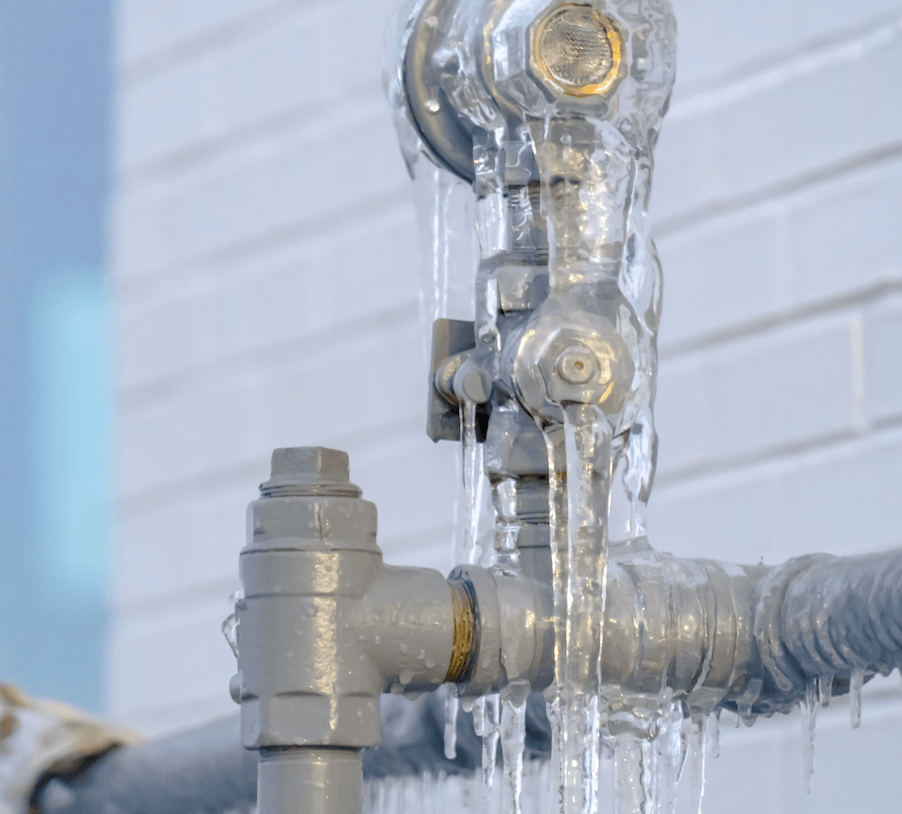How to Safeguard Plumbing System from Cold Weather: Critical Tips
How to Safeguard Plumbing System from Cold Weather: Critical Tips
Blog Article
Are you searching for content about 6 Ways to Prevent Frozen Pipes?

Cold weather can ruin your pipes, especially by freezing pipes. Here's exactly how to prevent it from taking place and what to do if it does.
Introduction
As temperature levels drop, the threat of icy pipes boosts, possibly resulting in pricey repairs and water damage. Comprehending how to avoid icy pipelines is vital for homeowners in cold climates.
Comprehending Icy Pipelines
What creates pipelines to ice up?
Pipes ice up when revealed to temperatures listed below 32 ° F (0 ° C) for extended durations. As water inside the pipelines ices up, it increases, taxing the pipeline wall surfaces and possibly causing them to rupture.
Dangers and problems
Icy pipelines can bring about water supply disturbances, home damage, and pricey repairs. Burst pipelines can flooding homes and trigger substantial structural damage.
Signs of Frozen Piping
Determining icy pipes early can avoid them from bursting.
Just how to determine icy pipes
Search for lowered water flow from faucets, uncommon smells or sounds from pipes, and visible frost on revealed pipelines.
Prevention Tips
Protecting prone pipelines
Cover pipelines in insulation sleeves or make use of warm tape to protect them from freezing temperatures. Focus on pipes in unheated or exterior areas of the home.
Heating methods
Keep interior rooms properly warmed, especially areas with plumbing. Open up cupboard doors to enable cozy air to flow around pipelines under sinks.
Securing Outside Plumbing
Yard pipes and outdoor taps
Detach and drain yard hose pipes prior to wintertime. Install frost-proof faucets or cover outdoor taps with insulated caps.
What to Do If Your Pipelines Freeze
Immediate activities to take
If you think icy pipes, keep taps open up to ease stress as the ice melts. Utilize a hairdryer or towels taken in hot water to thaw pipes gradually.
Long-Term Solutions
Architectural adjustments
Think about rerouting pipelines far from outside wall surfaces or unheated locations. Include extra insulation to attics, basements, and crawl spaces.
Upgrading insulation
Invest in premium insulation for pipes, attics, and walls. Proper insulation helps keep constant temperature levels and minimizes the danger of frozen pipes.
Verdict
Preventing icy pipes requires aggressive actions and quick responses. By recognizing the reasons, indicators, and safety nets, homeowners can secure their plumbing throughout cold weather.
6 Proven Ways to Prevent Frozen Pipes and Protect Your Home
Disconnect and Drain Garden Hoses
Before winter arrives, start by disconnecting your garden hoses and draining any remaining water. Close the shut-off valves that supply outdoor hose bibs and leave the outdoor faucet open to allow any residual water to drain. For extra protection, consider using faucet covers throughout the colder months. It’s also important to drain water from any sprinkler supply lines following the manufacturer’s directions.
Insulate Exposed Pipes
Insulating your pipes is an effective way to prevent freezing. Pipe insulation is readily available at home improvement stores and is relatively inexpensive. Pay close attention to pipes in unheated areas such as the attic, basement, crawl spaces, or garage. Apply foam insulation generously to create a buffer against the cold. You can also wrap your pipes in heat tape or thermostat-controlled heat cables for added warmth.
Seal Air Leaks
Inspect your home for any cracks or openings that could let in cold air. Seal any holes around the piping in interior or exterior walls, as well as the sill plates where your home rests on its foundation. Additionally, make sure to keep your garage door closed unless you’re entering or exiting. Leaving it open creates a significant air leak that can lead to frozen pipes.
Allow Warm Air Circulation
During cold snaps, it’s essential to allow warm air to circulate evenly throughout your home. Leave interior doors ajar to promote better airflow. Open kitchen and bathroom cabinets to help distribute heat consistently around the rooms. If you have small children or pets, be sure to remove any household chemicals or potentially harmful cleaners from open cabinets for safety.
Let Faucets Drip
A small trickle of water can make a big difference in preventing ice formation inside your pipes. When temperatures drop significantly, start a drip of water from all faucets served by exposed pipes. This continuous flow helps prevent the water from freezing. Additionally, running a few faucets slightly can relieve pressure inside the pipes, reducing the chances of a rupture if the water inside does freeze.
https://choateshvac.com/6-proven-ways-to-prevent-frozen-pipes-and-protect-your-home/

We were guided to that editorial about Helpful Tips to Prevent Frozen Pipes this Winter through someone on a different domain. In case you appreciated our blog posting please do not forget to share it. We cherish reading our article about 6 Ways to Prevent Frozen Pipes.
Request An Estimate Report this page